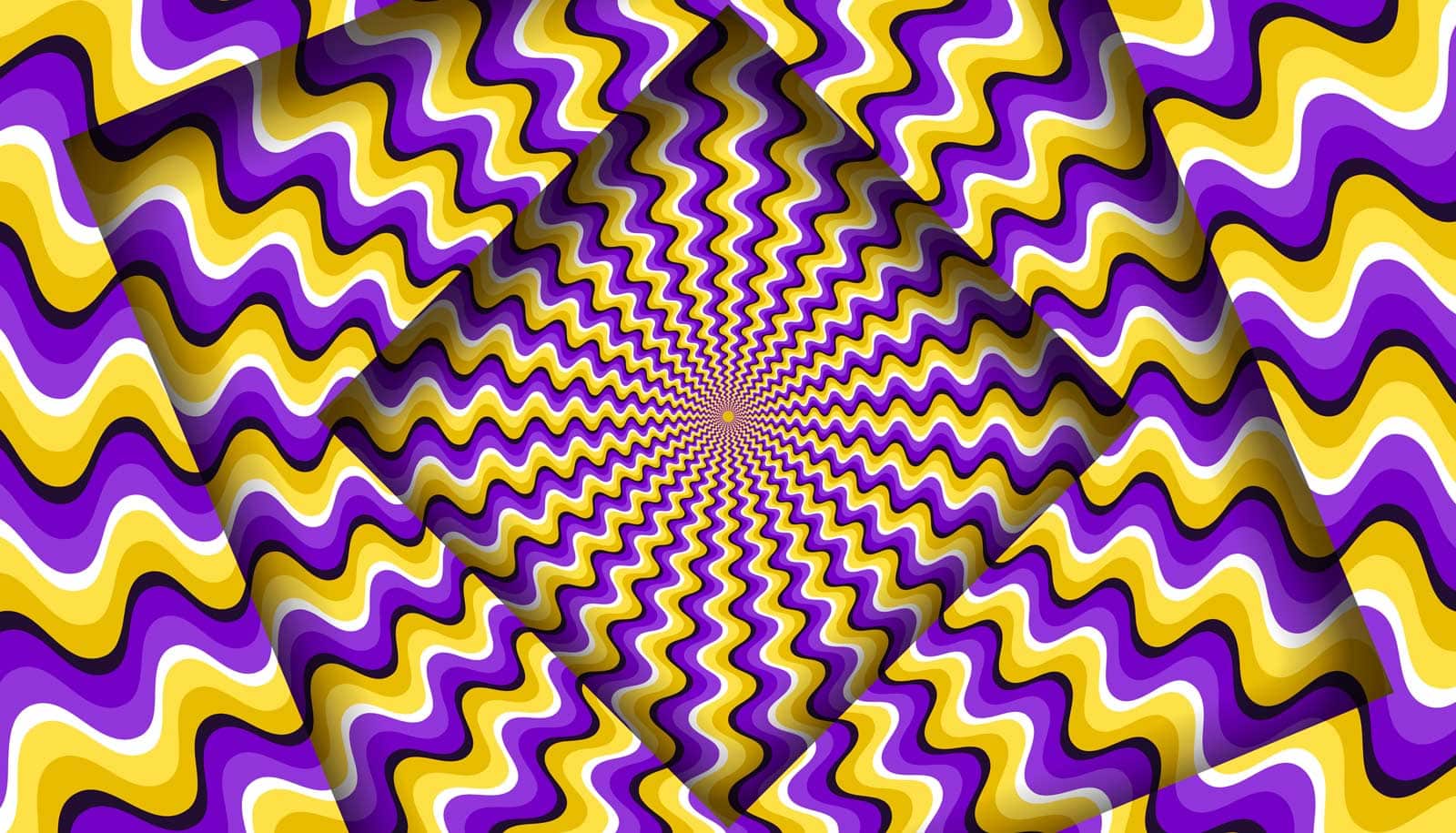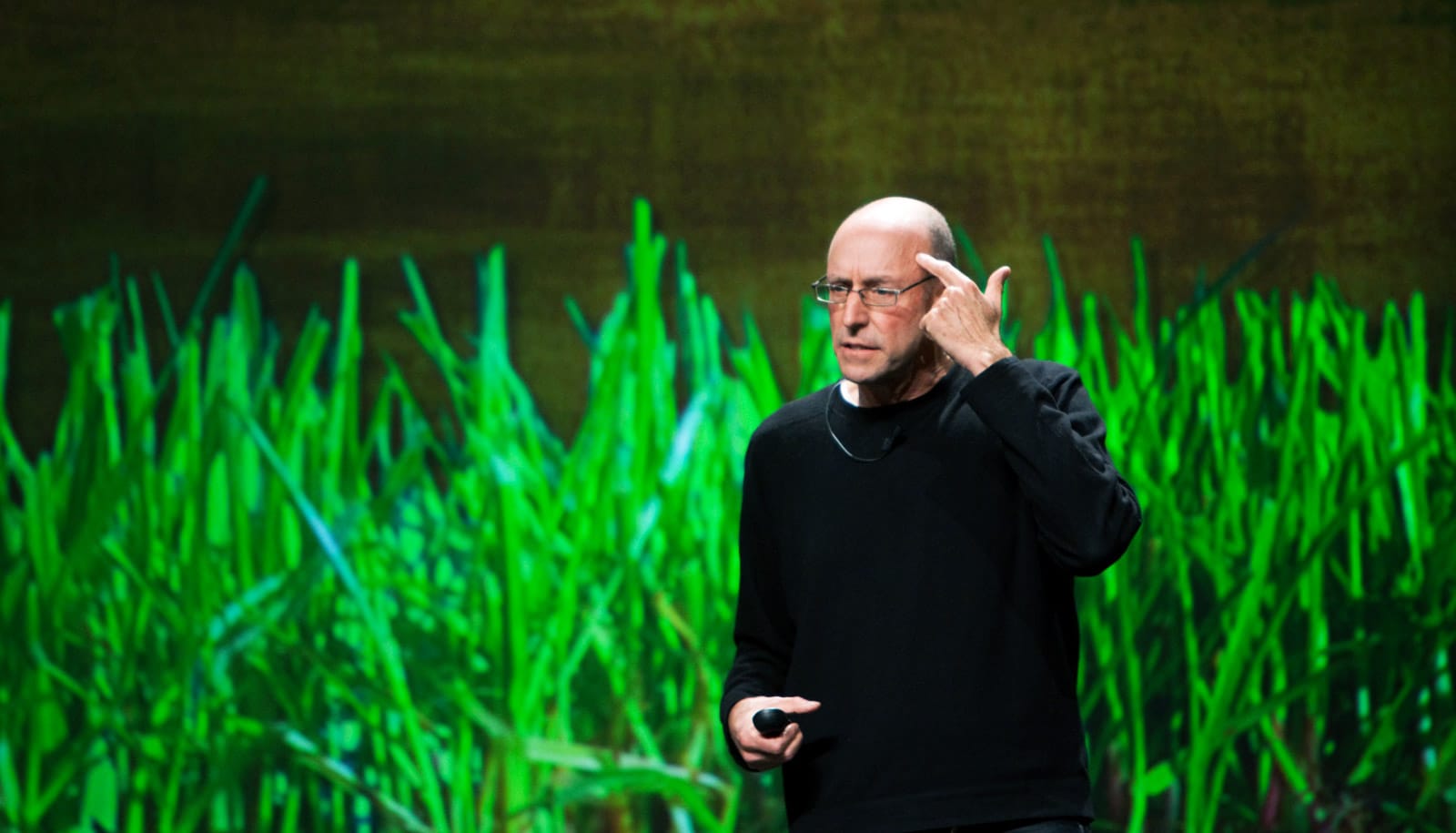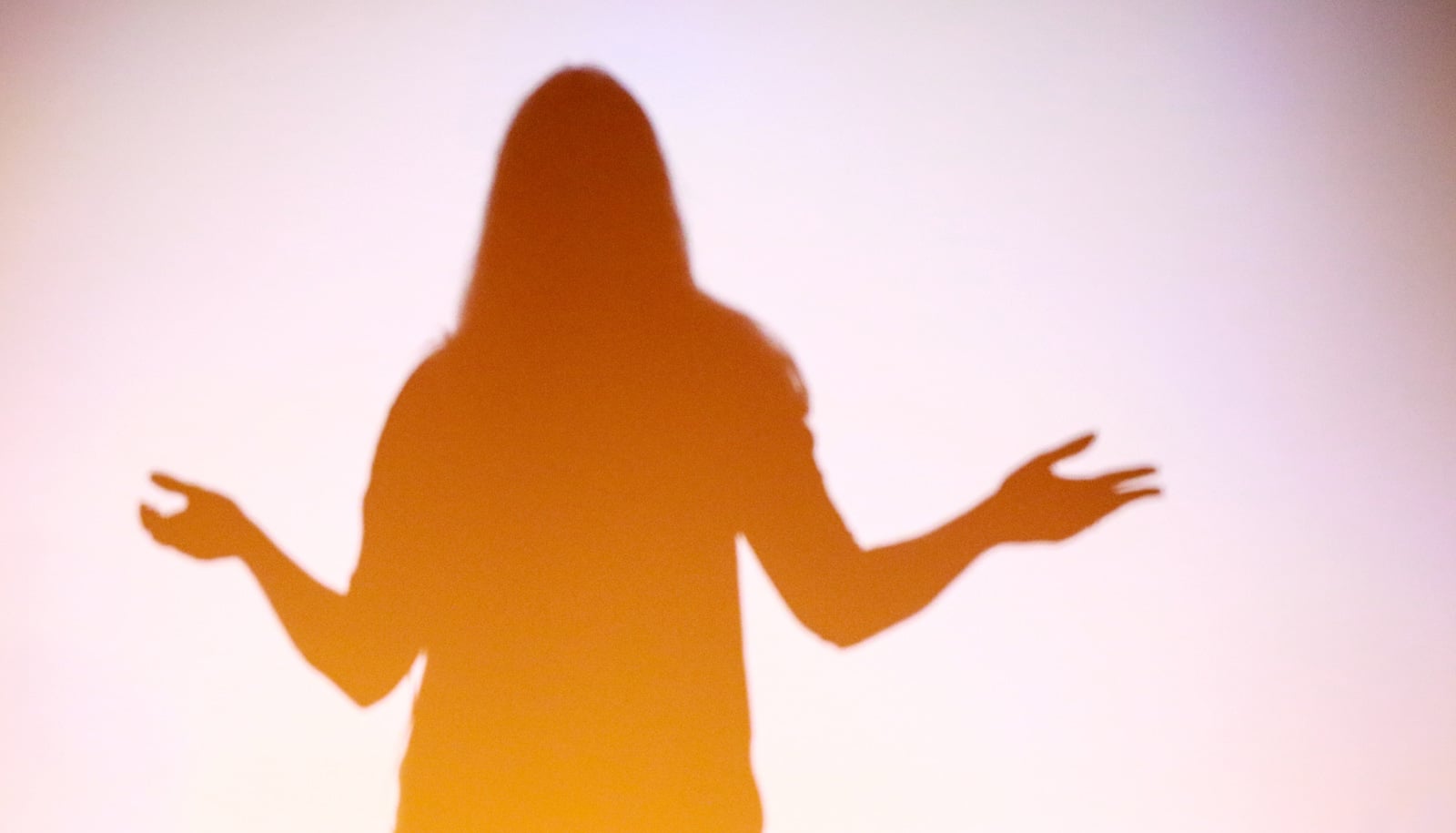Perception is not objective reality. Case in point: The image just above is stationary and flat. But try telling your brain that.
A new book, The Case Against Reality: Why Evolution Hid the Truth from Our Eyes (W. W. Norton, 2019), applies this concept to the whole of human consciousness—how we see, think, feel, and interact with the world around us. And author Donald Hoffman, a cognitive scientist at the University of California, Irvine, thinks we’ve been looking at it all wrong.
“I’m interested in understanding human conscious experiences and their relationship to the activity of our bodies and brains as we interact within our environment—and that includes the technical challenge of building computer models that mimic it, which is why I’m working on creating a model that explains consciousness,” he says.
Current scientific approaches assume there to be a pattern of neural activity that makes us experience things like the taste of a nut or the appearance of the color red. But, says Hoffman, there are no formal theories that explain this.
“As a scientist, I propose a theory and then try to prove the theory wrong, to test its validity,” he says. “Because there is no mathematical theory explaining the pattern of neural activity that creates consciousness, it may mean we are making a false assumption.” He argues instead that consciousness creates neural activity—that humans have evolved to see what’s needed for survival. Perceptions, he says, are a user interface, but not necessarily reality.
A vision scientist, Hoffman’s work has caught the attention of those in the scientific and spiritual communities for its attempt to understand qualities that make the human experience, well, human. In 1998, he published Visual Intelligence, which introduced 35 rules governing the perception of line, color, form, depth, and motion. The book explains how people process two-dimensional images to create a 3D environment—or how individuals use vision to construct the world around them. The concept, which comes from evolutionary psychology, is that humans have adapted in certain ways over time to survive and thrive.
“The field of vision science is really powerful,” he says. “The notion that we are constructing our own realities ties into so many different areas. These ideas can be used in many ways—including in marketing and advertising to change the way people experience a product.”
He’s put principle into practice for major names in fashion by redesigning clothing gradients to showcase more shapely rears, thighs, and busts. He’s applied the same ideas to marketing using mathematical analyses to determine the best color, lighting, structure, and composition of targeted advertising.
Here, he dives into the topic of consciousness, its roots in evolution, and his plan for trying to explain through science the very things that make us all human:
How has our conscious experience shaped what we’ve come to think of as reality?
It all goes back to evolution. Our senses evolved and were shaped by natural selection. We might guess that evolution favors true perceptions, which accurately describe reality. But it doesn’t. I and my grad students created computer simulations of evolutionary competitions between creatures with different kinds of perceptions. We found that organisms that saw truth went extinct when they competed against organisms that saw no truth, only—what evolutionary theorists call—”fitness payoffs.”
Think of it like a video game. You have to hunt for points as fast as you can, and if you get enough, you get to advance to the next level. If you don’t, you die. Evolution is the same. We’re hunting for “fitness payoffs.” And if you get them, your offspring advances to the next level. Fitness payoffs are really what it’s all about.
Most of my scientific colleagues think that if you’re looking for fitness payoffs, you’re looking for the truth. My team and I found that to be wrong. Fitness payoffs themselves don’t have info about the truth—they are what you have come to understand are important for survival and reproduction. If you’re chasing fitness payoffs, you slowly lose info about the true structure of the world in favor of what is important for helping you pass on your genes. Inevitably, then, you can’t see the true structure of the world. Organisms that see reality as it is are never more fit than those just tuned to see fitness payoffs.
Another way to think about this concept is looking at the world as a user interface—a mask. Three-dimensional space is really just like a desktop on a computer. The stuff we see is just there as an icon. An icon of a book that’s blue doesn’t mean the book and its contents are actually blue—it’s a simple symbol representing something much bigger. Not seeing the truth actually helps you—if we had to know all the truth about the computer and how to operate every circuit to make each action needed, we wouldn’t use it. Evolution literally hides the truth from us on purpose. Perception lets us control the truth while we’re utterly clueless about what actually is.
If what we’re seeing is our perception, what, then, is reality?
The quick—and right—answer is I don’t know. To understand and see reality, we have to first fully understand consciousness. And that’s no small task.
There are tons of correlations between brain activity and specific conscious experiences. Area V4 of the brain is coordinated with color experience. If I stimulate that area with a magnet, I can make you lose all color experience. Turn the magnet off and your color experience comes back. This is really important data. If I do the same in Area V5—you lose all motion perception. There are hundreds of correlations like this—specific patterns of activity. This is important data, but it’s just data. It’s not a theory. The question is—for scientists—what mathematical theory actually explains them? And we don’t have one. Why? Because most approaches assume that brain activity causes conscious experience. But no one has an idea about how to boot up conscious experience from the brain; there are no theories that explain this.
Our failure to find a theory suggests that we may be making a false assumption.
So what’s the answer?
Currently, there isn’t one. But I’m proposing one, and it’s a very simple yet profound idea. If we can’t start with neurons and boot up consciousness, let’s start with consciousness and boot up neurons. And that’s what I’m working on now—a mathematical model of consciousness. And it has to be precise.
“If we’ve mistaken our perceptions for the truth, our entire perception of spacetime and physical objects is misleading.”
The idea is that reality is a vast social network of interacting consciousnesses. Each conscious agent has experience and can make freewill actions. So it’s a very vast social network. Think of the Twitterverse. There are millions of users and billions of tweets. Trying to see and understand it all is too much. In big data, we use graphical interfaces that hide all of the chatter and instead give summaries. Evolution did that for us. Spacetime and physical objects are just our visualization tools that help us to interact within this vast social network without even seeing it.
If we are successful in creating a theory of consciousness, then we’d be able to more fully understand reality, the truth.
This notion—that we’re only seeing what evolution has wanted us to see—may be unsettling for some who right about now are questioning everything they see. What advice do you have?
I completely understand what they may be feeling. Getting to this point for me has not been merely an intellectual abstraction—it’s been an emotional odyssey. And it’s been extremely painful. I’ve had to let go of deeply held beliefs. But if you look back into history, we thought Earth was center of the universe. We burned people at the stake for contradicting something we believed so deeply to be true. It’s very hard to let go. And that was just a warm up. If we’ve mistaken our perceptions for the truth, our entire perception of spacetime and physical objects is misleading. This is just our interface.
It’s striking to think what we’ve deeply believed is deeply wrong. To think spacetime itself is false is stunning. Here’s a nice analogy: If you look at your own face in the mirror, what you see is skin hair and eyes. But you know firsthand what you can’t see—hopes, aspirations, dreams, fears, colors, headache—all of that is real, and you know firsthand it is. But all you really see is a face. All we see are icons. I assume behind all the symbols is the infinite network of conscious agents. When someone smiles, I can infer happiness, but the reality is that it’s just a curve of lines. It’s not the experience of happiness. A person’s face is a portal into the conscious experience of a conscious agent—a tiny window into your rich world.
If I look at my cat, I see a much smaller portal. It purrs went pet and I can generally know when it wants to be fed, but the interaction is done through a much smaller portal. With an ant the portal is extremely dim. I have very little insight into the conscious experience of an ant. With a rock, I’ve given up. I have a finite ability to understand the conscious experience of others, but that doesn’t mean it doesn’t exist—it’s still all an intricate network of conscious experience. The whole point of the interface is we have to dumb things down. We have to have a point at which we give up trying to understand; the true nature of reality is too much. Physicalism – the idea of spacetime as fundamental—is mistaking a limit of our interface for an insight into reality. Rocks and atoms look unconscious and inanimate; therefore we assume that’s the reality. But it’s not. I see pixels on a computer screen, but computers aren’t just pixels. We know there’s a deeper reality behind the screen. Physicalism is just that. We’ve made a very simple mistake—we mistook the format of our interface and its limitations as an insight into the ultimate nature of reality. Therefore we assume that reality is unconscious at the foundation. And that’s why the hard problem has been hard to solve.
You’ve given multiple talks with Deepak Chopra and others in the spiritual community. How does your work on perception and reality intersect with religion and spirituality?
What I’m doing from a science perspective is bringing mathematical rigor to what those in the spiritual community have been thinking for hundreds of years. But I’m iconoclastic—just because something has been believed for thousands of years doesn’t make it true. This is very different from the standard religious view. I think it’s important to have mutual respect—we can get to a point where the science side can learn from the spiritual traditions and likewise the spiritual side can learn not to hold ideas too tightly. How can you learn if you’re not willing to let go of what might be false? It gets in the way of genuine progress.
Who are we? Why are we here? These questions get to the heart of human nature, and trying to answer them will involve both scientific methods and spiritual traditions. The scientific method has been spectacular in terms of helping us to see where we’re wrong. And that’s the key. That’s my attitude about science. Be precise so we can find precisely where we’re wrong. We need to learn what ideas are useful and which are wrong so we can evolve on all fronts. I believe that science and spirituality can interact. When we do, maybe we’ll be able to answer questions like is there life after death as technical questions.
Source: UC Irvine



